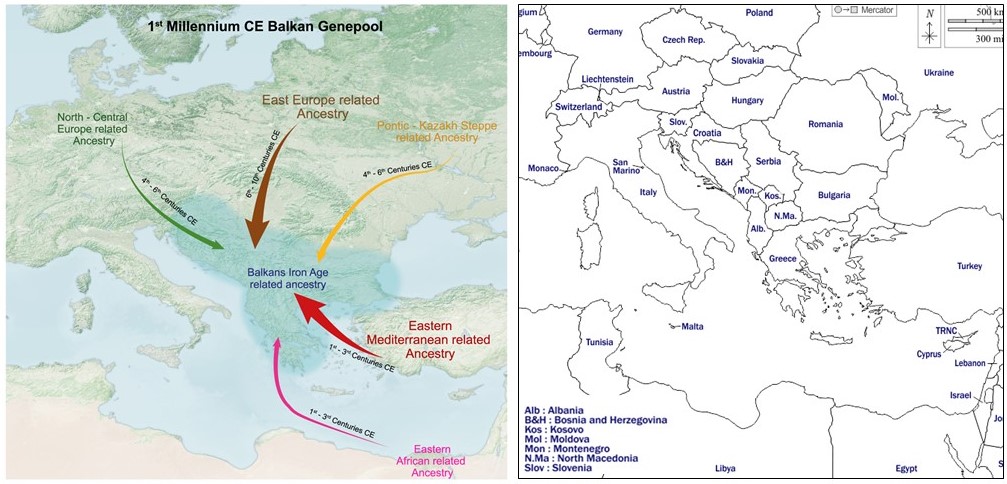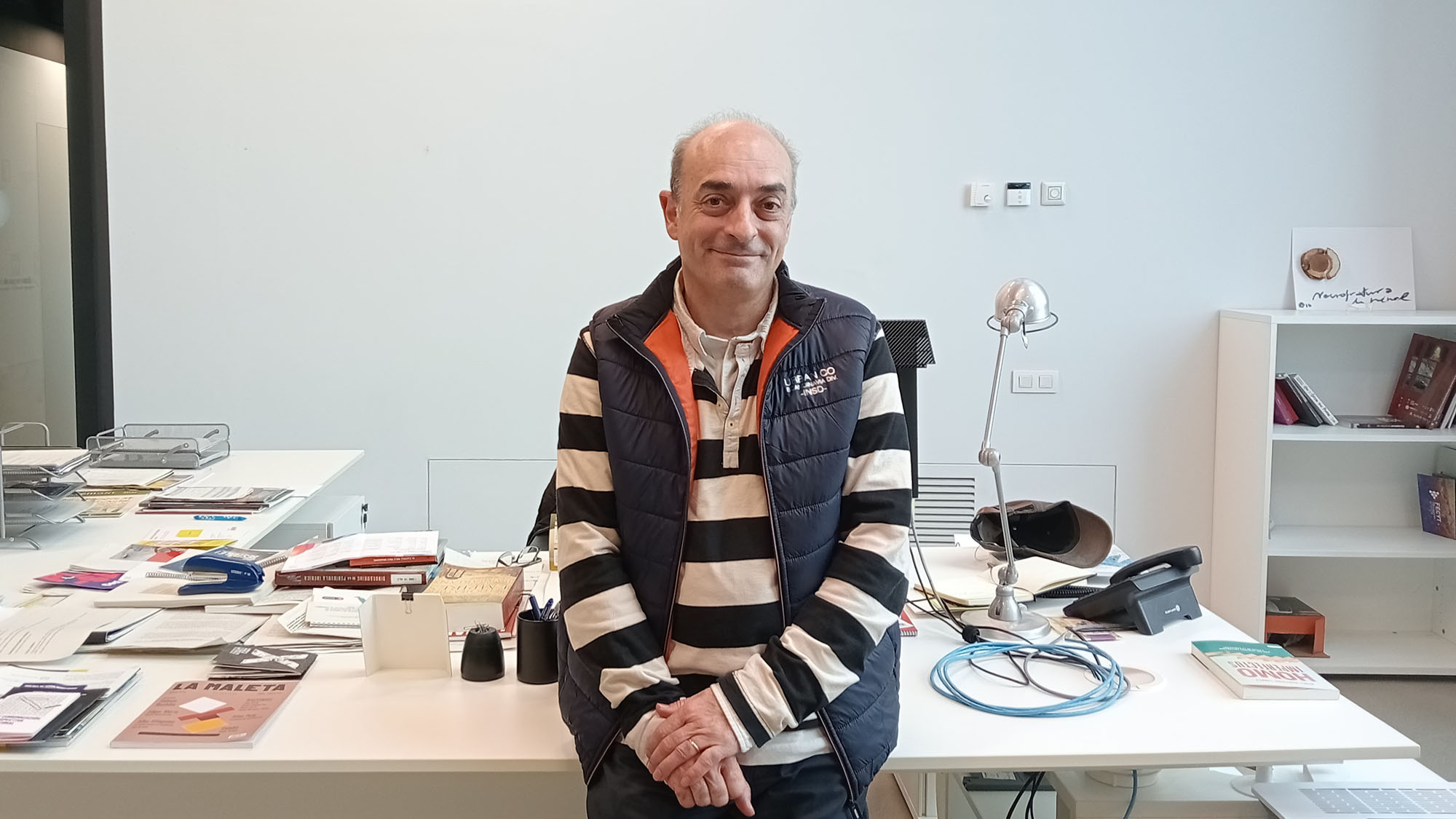The Institute for Evolutionary Biology (IBE: CSIC-UPF) and Harvard University have co-led a study that, for the first time, characterises the genomic history of the Balkans between the time of the Roman Empire and the 11th century. It identifies the most important barbarian migration in this period. The study also involved the University of the Basque Country, the University of Western Ontario and the University of La Rioja.
The study proposes a model for integrating the analysis of genetic and archaeological data. Using this model, it describes the migratory flows that shaped the ancestry of the Balkans during the first millennium. After the fall of the Western Roman Empire, there was a strong migration of populations genetically similar to today’s Slavic populations to this area.
“It’s a massive phenomenon. We are talking about the barbarian migration that probably had the greatest genetic impact in this period”
Carles Lalueza-Fox, IBE: CSIC-UPF
The analysis also reveals other migratory flows that demonstrate that the area was a crossroads of cultures. In the first millennium, populations from the Anatolian Peninsula migrated to the Balkans, and this ancestry has been detected at Roman sites in Serbia. Even the genomes of three individuals with African ancestry have been found, suggesting a diverse and cosmopolitan Roman Empire. “It is a massive phenomenon. We are talking about the barbarian migration that probably had the greatest genetic impact in this period,” explains Carles Lalueza-Fox, one of the authors of the study.

On the right, current political map taken from D-maps.com.
Today’s Balkan populations have a Slavic genetic influence of 30-60%. Moreover, this influence is distributed from north to south and does not coincide with the current geopolitical and cultural distribution. This finding opens up an interesting reflection on the mechanisms of cultural and identity construction of peoples in a region that has experienced many conflicts in recent centuries.
We talked to Lalueza-Fox about all this, and about how genetics can collaborate with other sciences, such as archaeology and history, to reconstruct our past. He also explains how the search for knowledge has fostered a very interesting intercultural collaboration between Serbian and Croatian scientific teams.
Genetics and archaeology go hand in hand
Lalueza-Fox and Miodrag Grbic, both biologists, met at the Barcelona Biomedical Research Park (PRBB) and began their genetic study of the Balkans in Serbia. Thanks to collaboration with archaeologists working in the ancient Roman city of Viminacium, in present-day Serbia, they have obtained genetic samples from ancient populations in the area. “In this work, we have made an effort to bring together geneticists, archaeologists and historians,” says Lalueza.
“Genetic results help to go further in interpreting the archaeological record. Genetic data is more objective in the sense that any geneticist with the same data would come to the same conclusion”
Carles Lalueza-Fox, IBE: CSIC-UPF
These samples need to be compared with the genomes of the current populations. In the case of Serbia, the researchers have also genotyped the current inhabitants. This is a population for which no data were available due to the political isolation of the region since the Balkan war.
They later decided to open up the study to the whole Balkan region and joined forces with David Reich from Harvard University. They analysed 136 ancient genomes and identified several important migratory phenomena. First, from populations in Anatolia, and later from populations in central Europe, northern Europe and the steppes. Later, after the end of the Western Roman Empire, large-scale migrations of Slavic populations were observed. This confirms a period of migrations of ethnically diverse human groups, known as the “barbarian” migrations.
“Genetic results help to go further in interpreting the archaeological record. Genetic data is more objective in the sense that any geneticist with the same data would come to the same conclusion. However, the interpretation must be carried out in conjunction with archaeological and historical data,” says Lalueza-Fox.
Although he admits that the discussion of these discoveries has led to some isolated cases of identity conflict, the researcher explains that the collaboration between the Croatian and Serbian teams of archaeologists and biologists has worked very well. He sees it as an example of how science can bring together people from countries with a history of conflict.
Genes tell a different story
The Balkan area is a complex territory in terms of the cultural diversity of its populations and countries. It has been an area subject to many bloody episodes in recent centuries due to power struggles and nationalist claims based on identity mechanisms. Lalueza-Fox reminds us of a quote by Winston Churchill: “The Balkan region has a tendency to produce more history than it can consume”.
“The Balkan region has a tendency to produce more history than it can consume”.
Winston Churchill
The Serbs see themselves as South Slavs and feel closer to the Russians than the other regions. They are Orthodox and their language is of Slavic origin. Other regions, such as Croatia and Romania, claim their Latin and Mediterranean heritage, which permeates their own cultural aspects such as language and religion.
But this study shows how, at the genetic level, Slavic and Mediterranean influences are found throughout the territory. “There are no major genetic differences between Serbs and Croats, but rather differences from north to south“, explains Lalueza. This contrasts with the cultural differences that these two countries have developed for historical reasons and which have led them into conflict for a long time. Genetic data show that both are about half Slavic and half Mediterranean.
Slavic migration between the 6th and 11th centuries accounts for 30-60% of the ancestry of the populations of the Balkans. The Slavic influence is greatest in the northern populations, such as Serbia and Croatia, and decreases as one moves southwards. In mainland Greece it is 30-40% and extends to the Greek islands, where it can be as high as 20%.
“There are no major genetic differences between Serbs and Croats, but rather differences from north to south.”
Carles Lalueza-Fox, IBE: CSIC-UPF
The mechanisms of identity construction are complex and based on many factors, including social, historical and cultural factors. The genetic study of peoples’ ancestry adds a layer of reflection and can help enrich historical interpretations of other records, such as the archaeological record. A historical interpretation of genomes can help to understand the past, as genetic studies can shed light on social aspects such as migration, power or inequality. It is precisely this perspective that Lalueza-Fox explores in his latest popular book, Desigualdad. Una historia genética (Editorial Crítica, 2023).
Perhaps genetic analysis can help to combat some ideas that are far removed from the values of coexistence, such as racist ideas based on historical epics that we can reinterpret with this type of data.
Olalde et al., A genetic history of the Balkans from Roman frontier to Slavic migrations, Cell (2023), DOI: https://doi.org/10.1016/j.cell.2023.10.018







